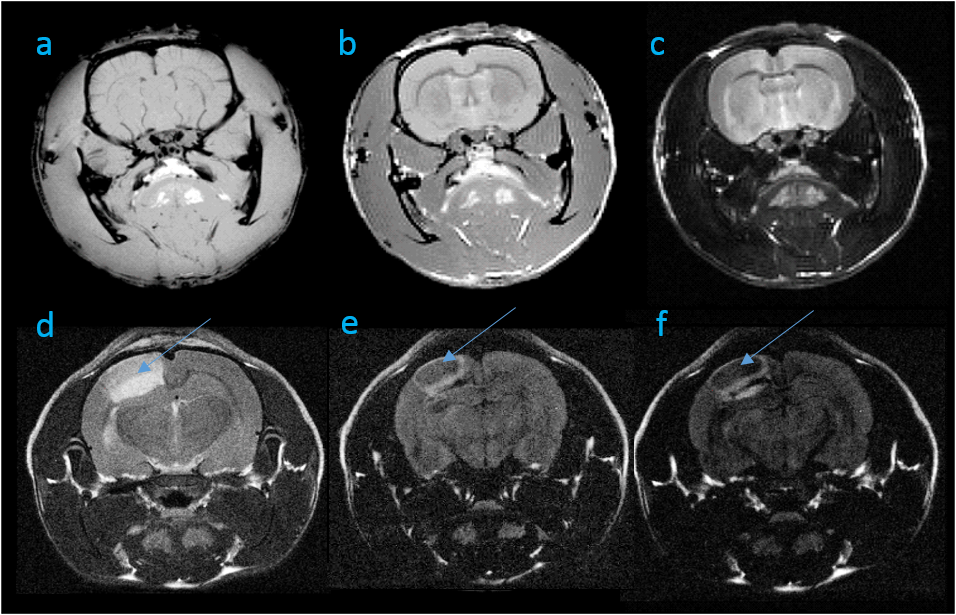Ischemic stroke high-contrast visualization using various MRI techniques
- 1. Lobachevsky State University, Radiophysics, Nizhni Novgorod, Russian Federation
- 2. G. A. Razuvaev Institute of Organometallic Chemistry of Russian Academy of Sciences, Nizhni Novgorod, Russian Federation
- 3. Nizhny Novgorod State Medical Academy, Nizhni Novgorod, Russian Federation
Ischemic stroke is now widely distributed old people sickness, but recently a rejuvenation tendency of that illness is observed. Stroke is when poor blood flow to the brain results in cell death and part of the brain not functioning properly. Stroke can be caused by poor blood flow to specific brain region by reason of brain blood flow decrease, thrombosis or embolism connected with vessels, heart or blood sickness. MRI methods can be used for visualizing this abnormality, at that it is necessary to define the volume of living cells in lesion focus with high accuracy, because this specializes the type of medical aid.
The aim of our research is to define and visualize ischemic stroke field and to define a border between dead cells region and a region of cells that are potentially recoverable. Blood flow for those cells is lower for their normal functionality, but higher than death threshold (this field caused penumbra).
Experiments were made on Agilent Technologies (Santa Clara, California, United States) 9.4 T (400 MHz) MRI machine. Images of mouse and rat model of local ischemia or stroke due to photothrombos is in motor region of cerebral hemisphere were taken. We used different regime to create a set of MR images: the gradient echo (T2*-weighted) MR images, this technique is typically used for functional imaging to investigate dynamic process; anatomical (T2-weighted) MR images with the contrast proportional to the water content, and diffusion weighted MR images with the contrast inversely proportional to the diffusion (fig.1).

In addition, we have made series of experiments using CEST technique for measuring pH level of different brain regions and pH brain mapping. CEST indirectly measures protons in amide, amine, hydroxyl, and other functional groups, generally called labile protons, by chemically energy exchange of them with water protons, called bulk water protons. The speed of such exchange directly depends of tissue pH level that allows making a pH-level map of selected tissue in vivo. As a CEST marker, we use glutamic acid, which is present in brain and acts as main excitation neurotransmitter in nervous system.
Consequently, an analysis of MRI images was made for defining penumbra. Optimal parameters for getting high-contrast MRI images of ischemic stroke were also matched.
This work is partially supported by RFBR, research project 15-43-02285, 15-42-02658
